The photos that explain Nicaragua's crisis
- Published
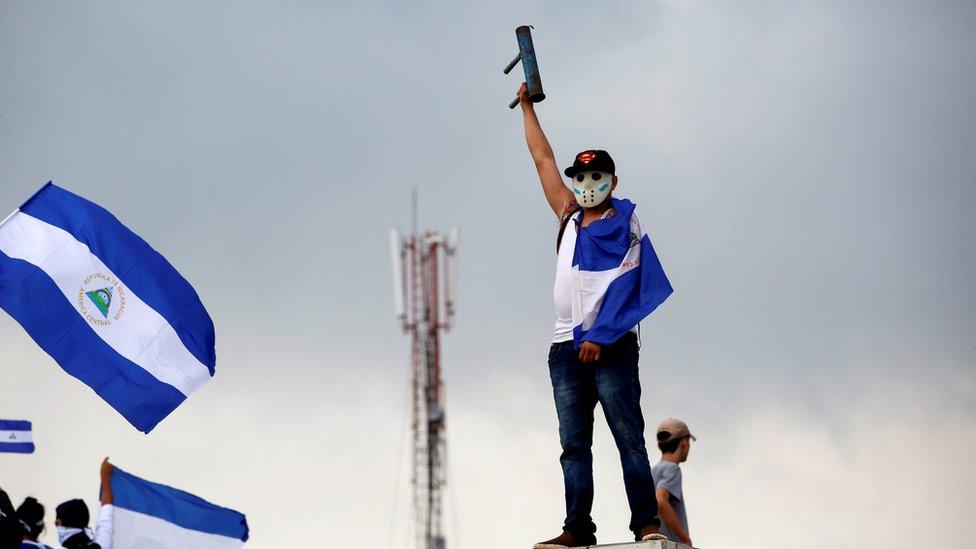
The Central American nation of Nicaragua has been embroiled in political unrest for more than a month, during which more than 70 people have died.
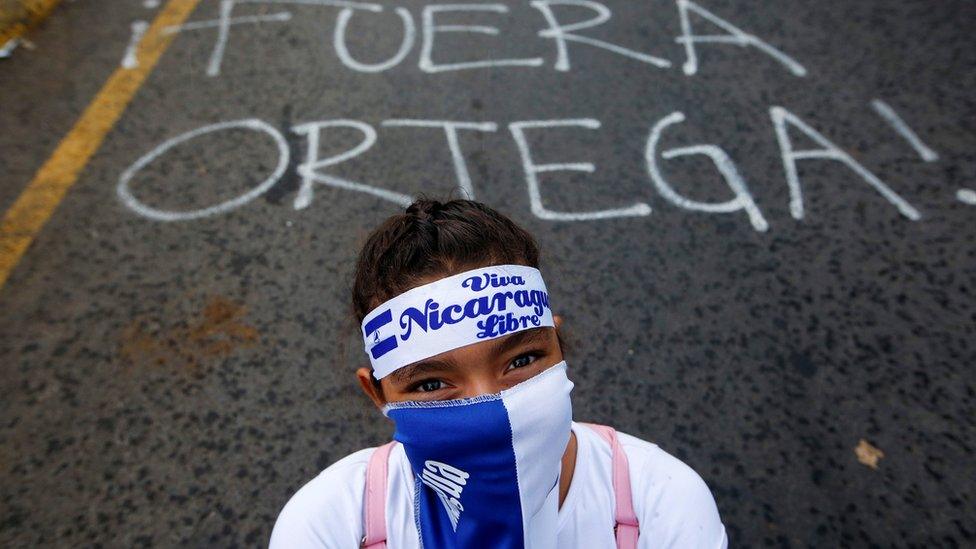
Protests over social welfare cuts have evolved into violent clashes involving thousands of people. Initially, hundreds of protesters - mostly pensioners and students - took to the streets.
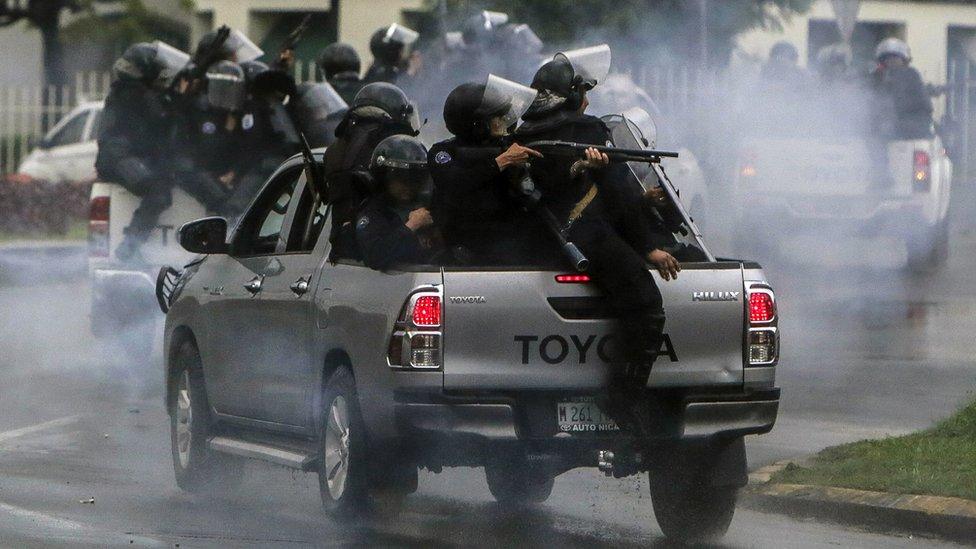
But the scale of the response, allegedly involving beatings by pro-government gangs, prompted thousands more to join them. The police response grew in kind, and the marches morphed into widespread anti-government rallies.
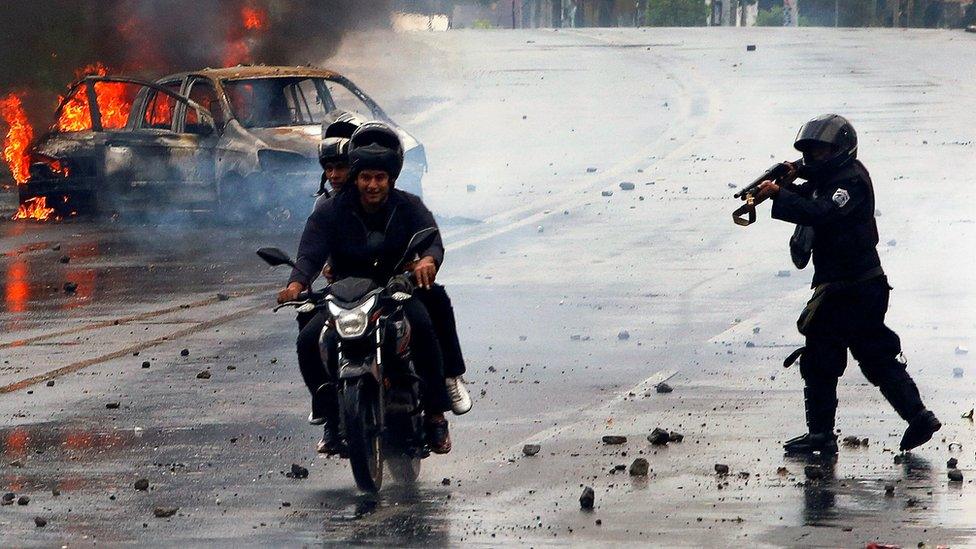
Many police have been injured - but the deaths of dozens of protesters has angered many. One journalist was shot and killed while covering the violence live - by an unknown person - and others say they are being censored. Protesters say President Daniel Ortega is behaving like a dictator.
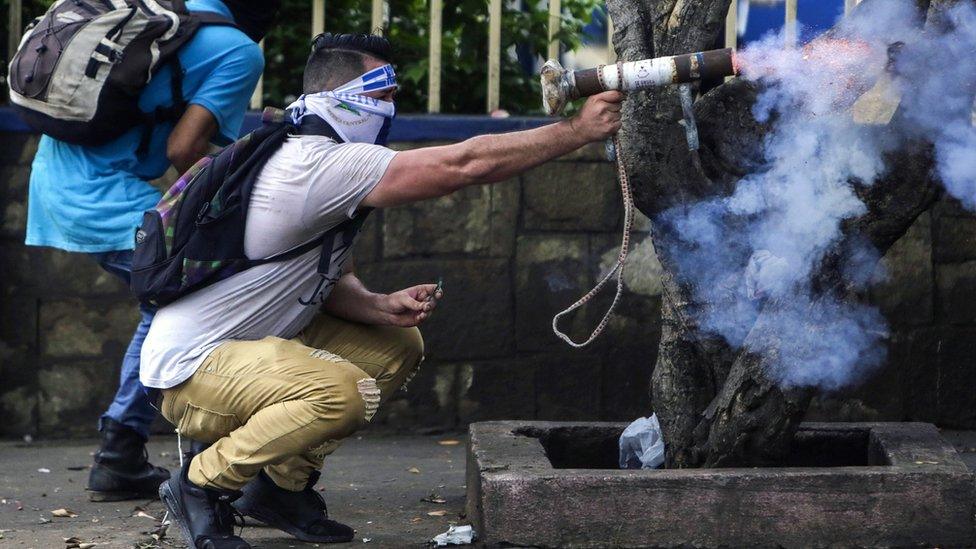
On the side of the protesters, homemade mortars are a common sight. The smooth tubes are loaded with a projectile and explosive propellant, and fired by lighting a simple fuse.
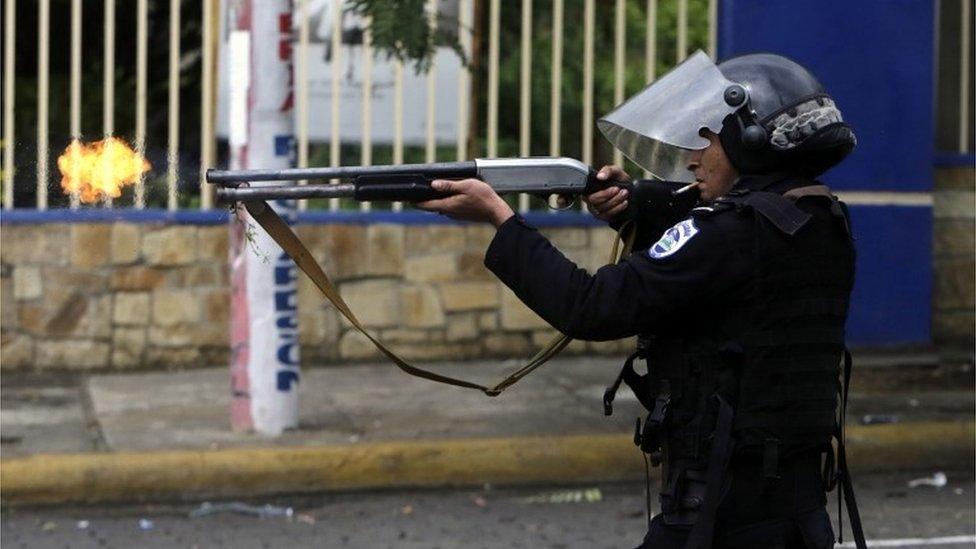
Meanwhile, the security forces have been using tear gas and rubber bullets but also live ammunition. A report by the Inter American Commission of Human Rights accused the government of a disproportionate use of force and said it could not rule out extrajudicial killings. The report also denounced the torture and arbitrary detention of protesters.

The use of mortars has always been a common feature of political demonstrations in Nicaragua. This woman fired one dramatically at a rally to show her support for President Ortega's FSLN party. During these protests, however, they have also been used as a weapon by both sides, sometimes with deadly consequences.
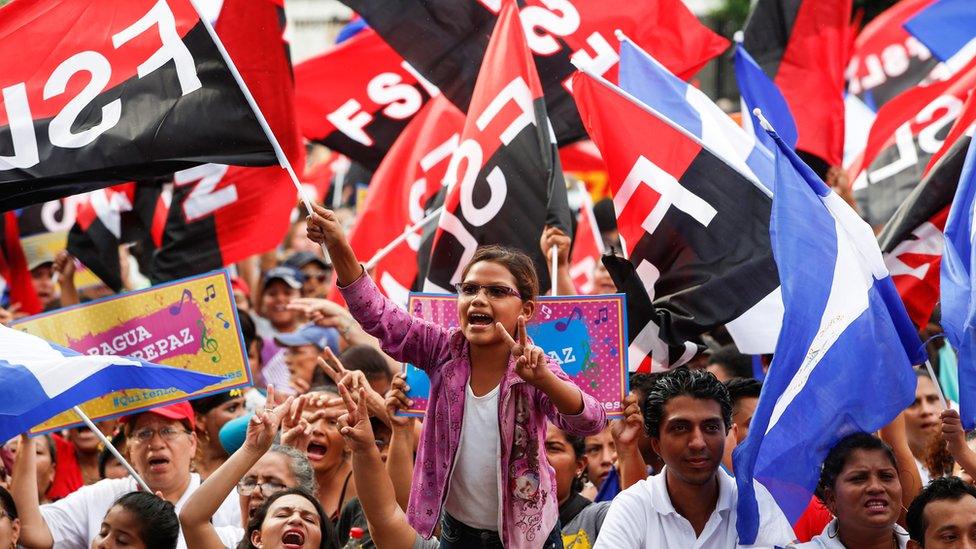
President Ortega's supporters have staged counter-demonstrations. Mr Ortega claims criminals and gang members have infiltrated protest rallies, while his wife - and vice-president - has previously said police violence is a "legitimate defence against a tiny group" of troublemakers.
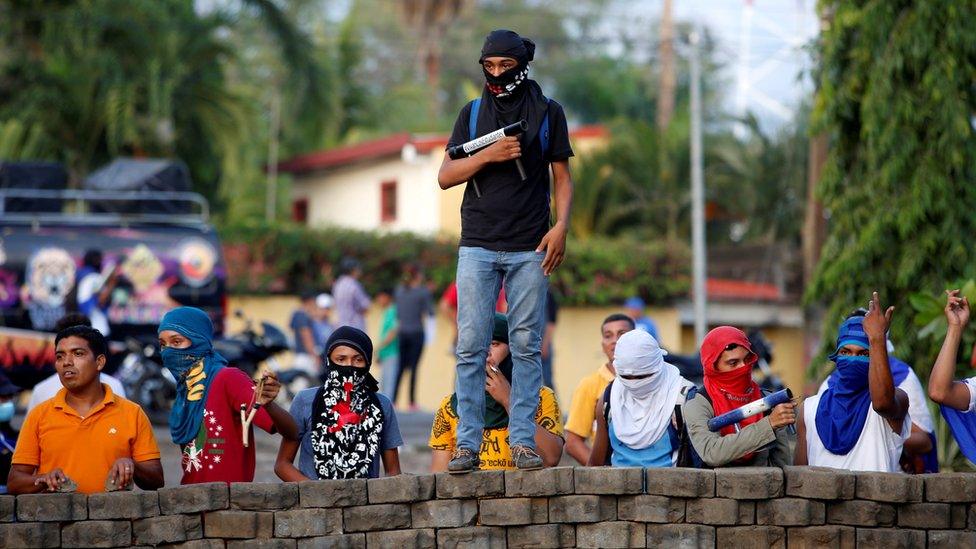
Young people and students have been a major driving force in the protests. Here, they can be seen blocking off the Pan-American highway in Leon.
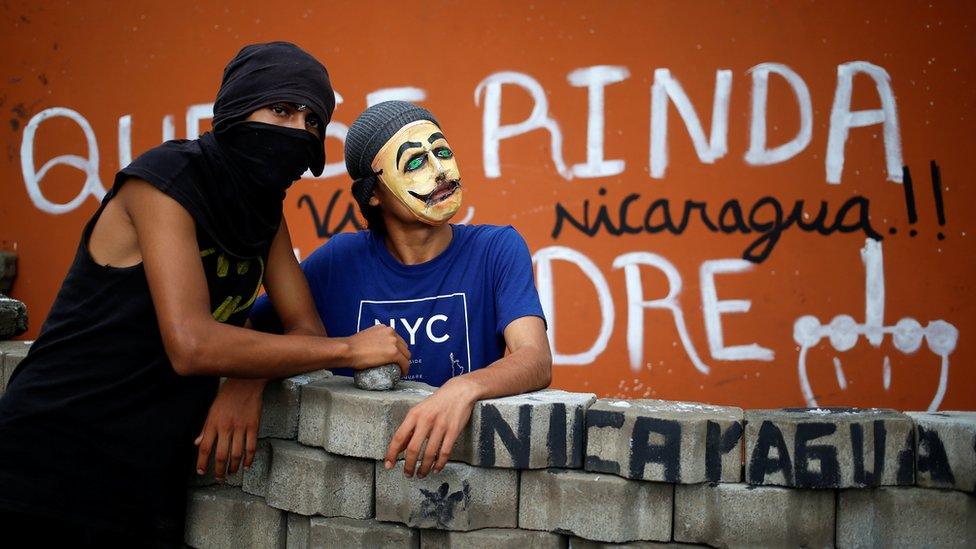
Some student populations have blocked off their entire universities, manning the barricades - like this wall at the entrance to the National Agrarian University.
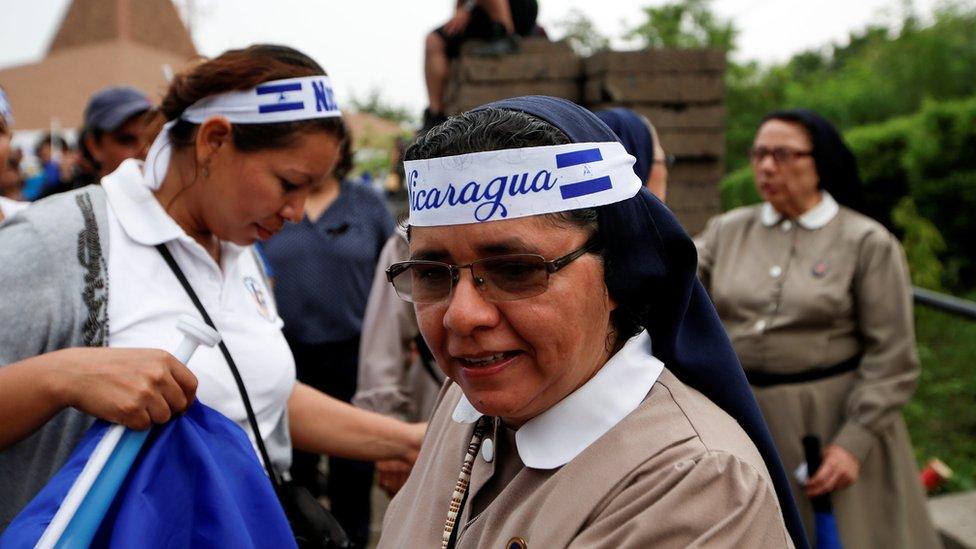
In April Pope Francis called for an end to the violence - yet it has grown far worse since. Nuns seen here were taking part in a remembrance ceremony for the victims. Amid all the unrest, the country's dominant Catholic Church has attempted to step in and mediate in the dispute.
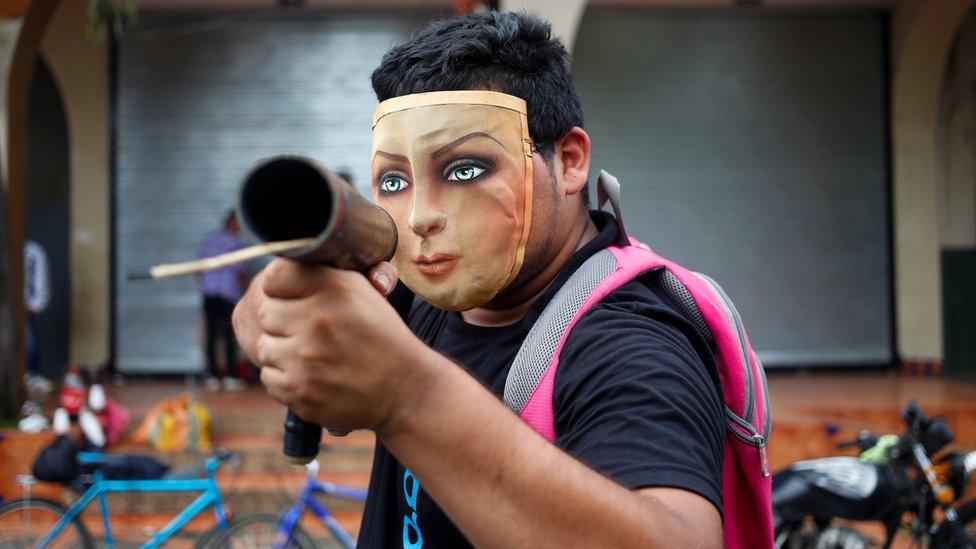
That attempt at mediation failed last week - and the anti-government rallies erupted again last weekend with thousands taking to the streets.
- Published7 May 2018
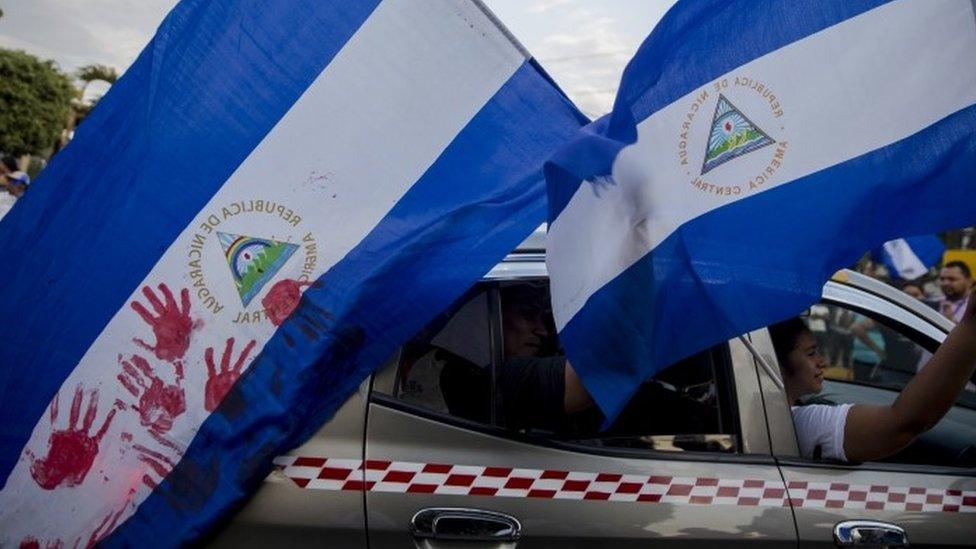
- Published27 May 2018

- Published23 April 2018
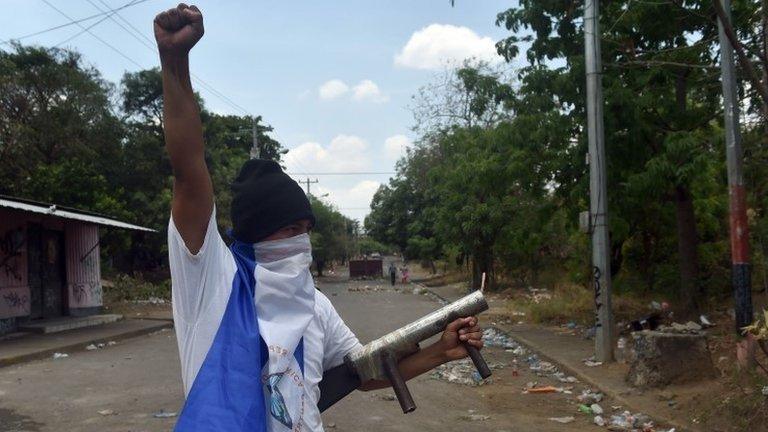
- Published22 April 2018
